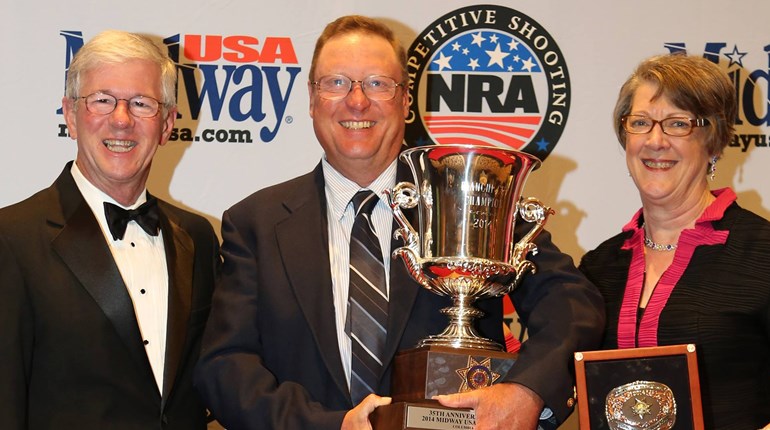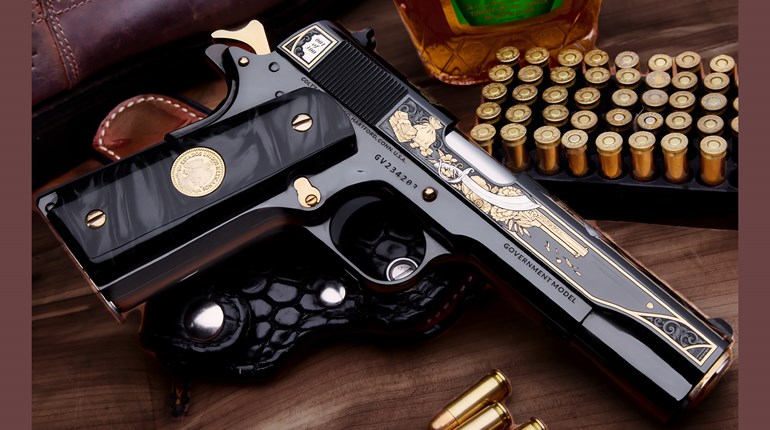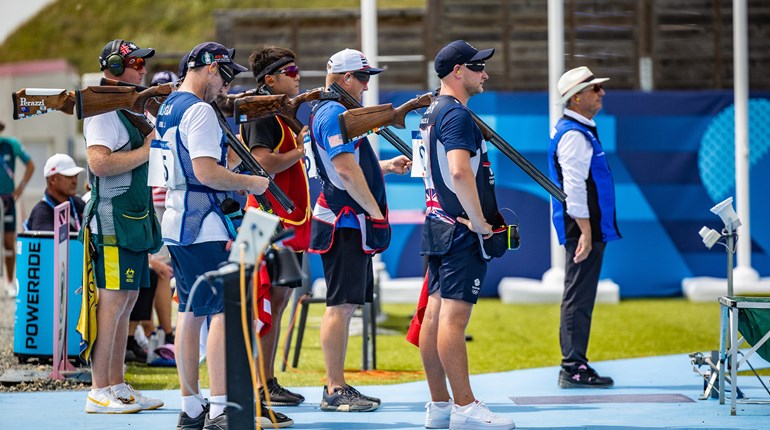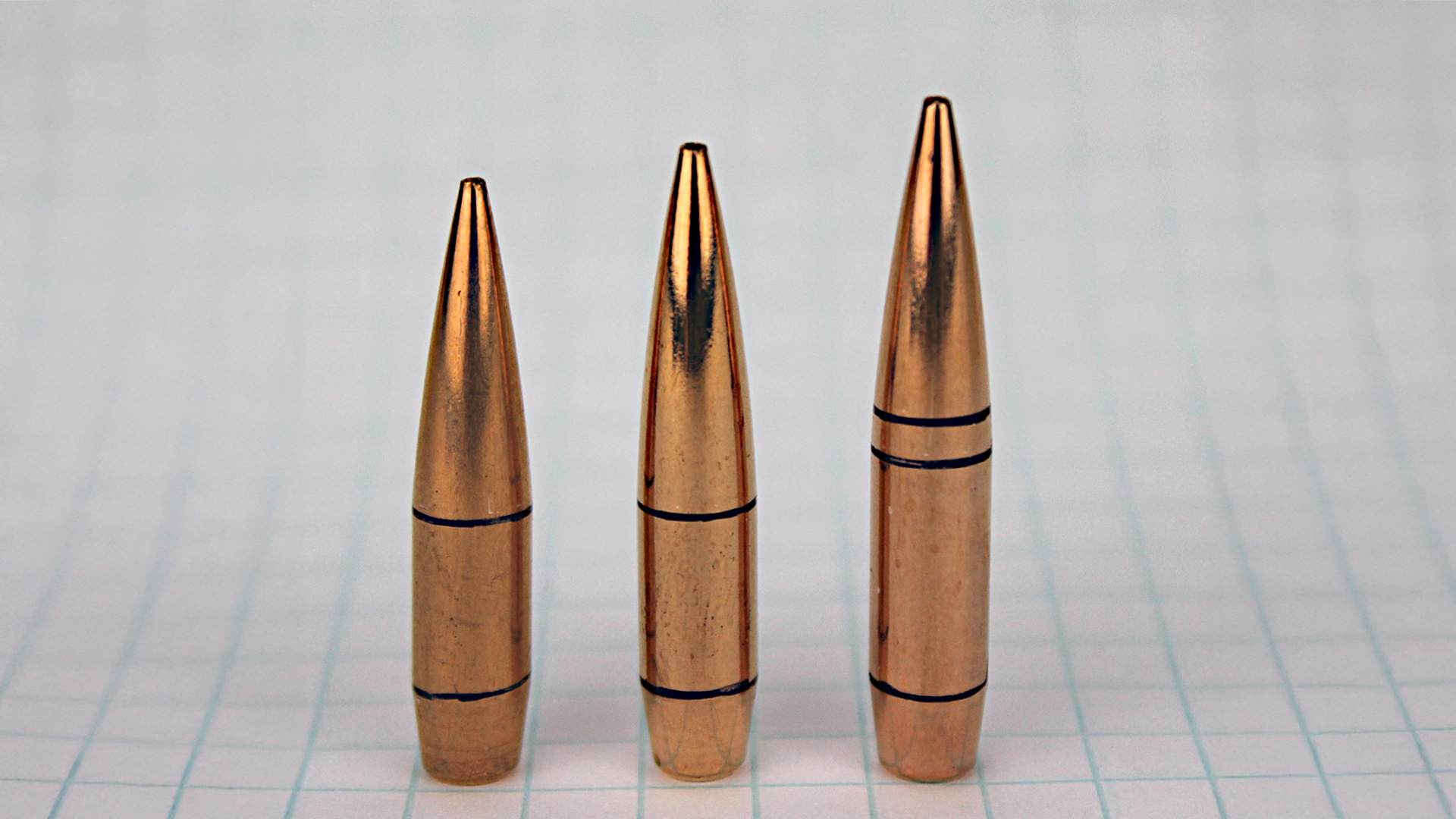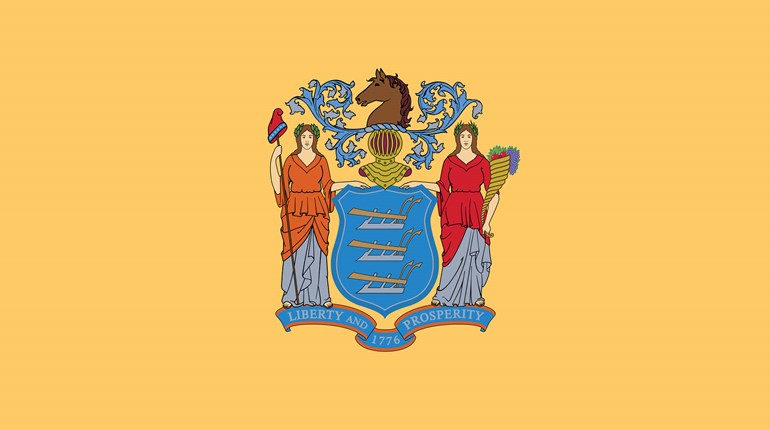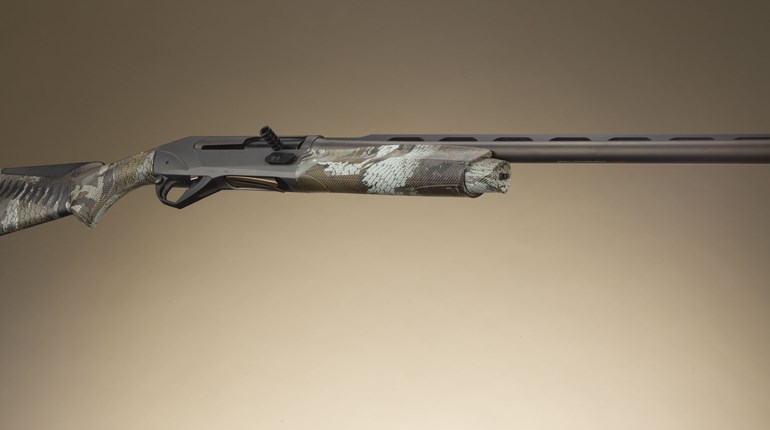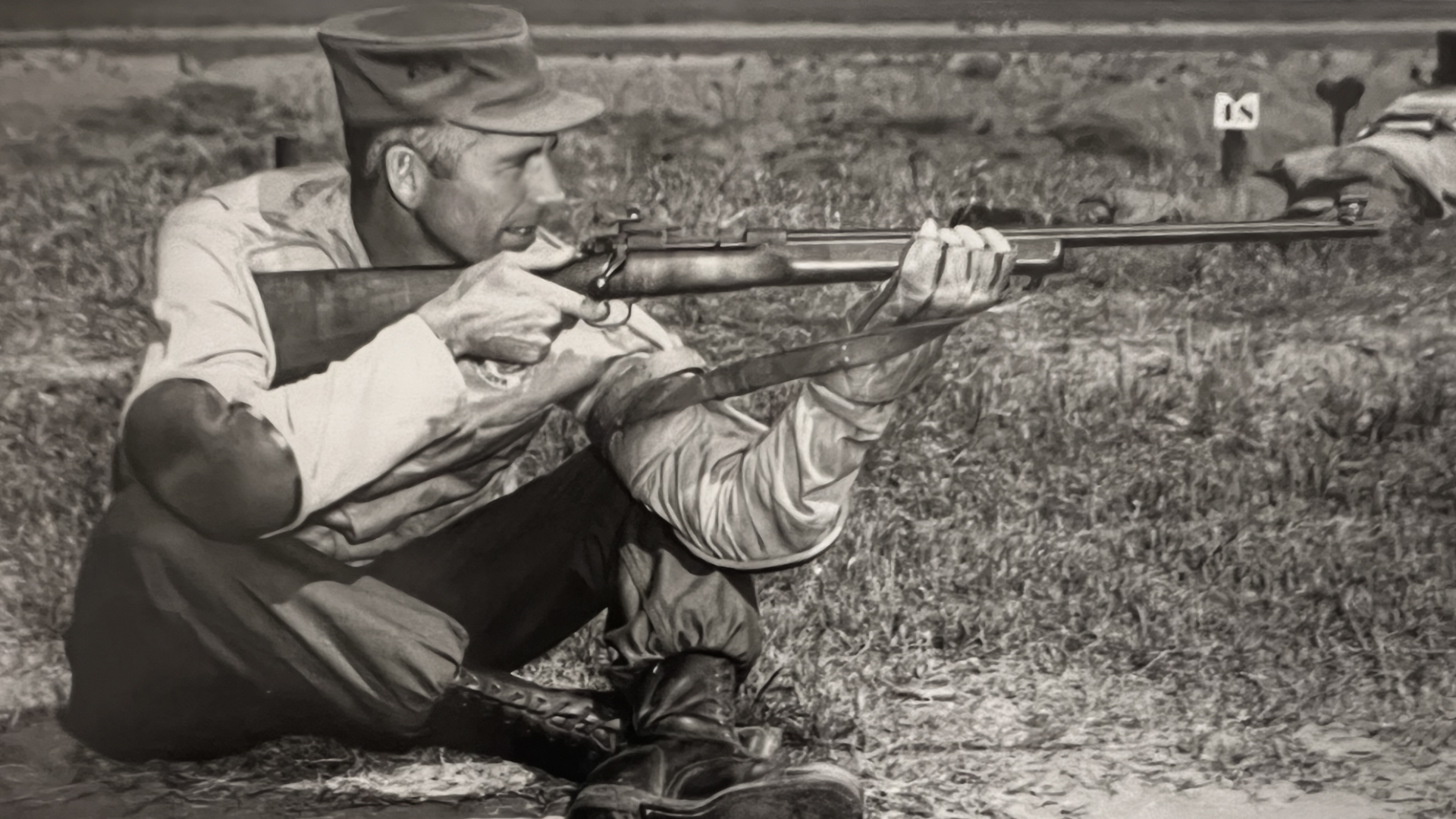
“NRA President Rear Adm. Morton C. Mumma, US (Ret.), shot a 100 possible with 12 Vs in the 1,000-yd. Wimbledon Cup Match during the recent high power National Matches at Camp Perry. Quite a feat when you consider he had not fired competitively for 28 years.”
—The American Rifleman, October (revised December) 1956
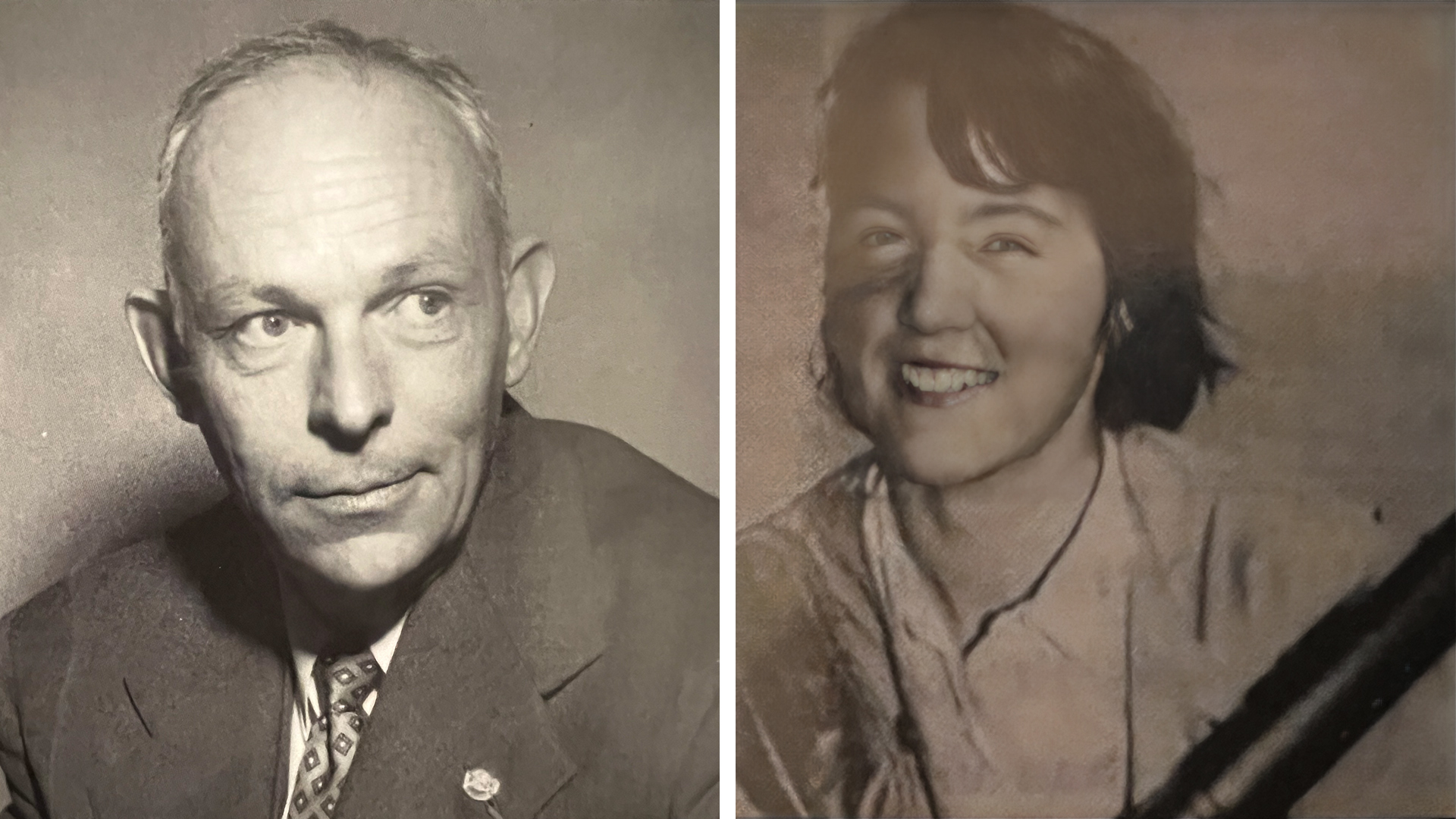
NRA and National Board officials still encountered disagreement over National Match funding as the Bureau of the Budget again approved just a portion of the requested amount. But overall, progress was made as the 1956 Appropriation Bill contained more substance than the year prior. The bill included an ammunition allotment, much like what the Senate had espoused for the 1955 National Matches, in addition to this year’s monetary apportionment of $257,000. Specifically, Section 632, General Provisions, provided that the Secretary of Defense, upon requisition of the National Board for the Promotion of Rifle Practice, and without reimbursement, transfer ammunition from agencies of the Department of Defense to the Board for use at the National Matches.
The late passage of the bill (August) spurred a rush of competitor interest that forced match officials to accept entries after the initial closing dates and erect more tents to accommodate the influx of shooters and families. The month was also significant when, on August 10, the Armed Forces Act was passed as Public Law 1028 in the 84th Congress. The Act revamped many of the statutes relating to all segments of the Armed Forces and National Guard and incorporated or revised National Board functions into U.S. Code Titles 10 and 32, respectively.
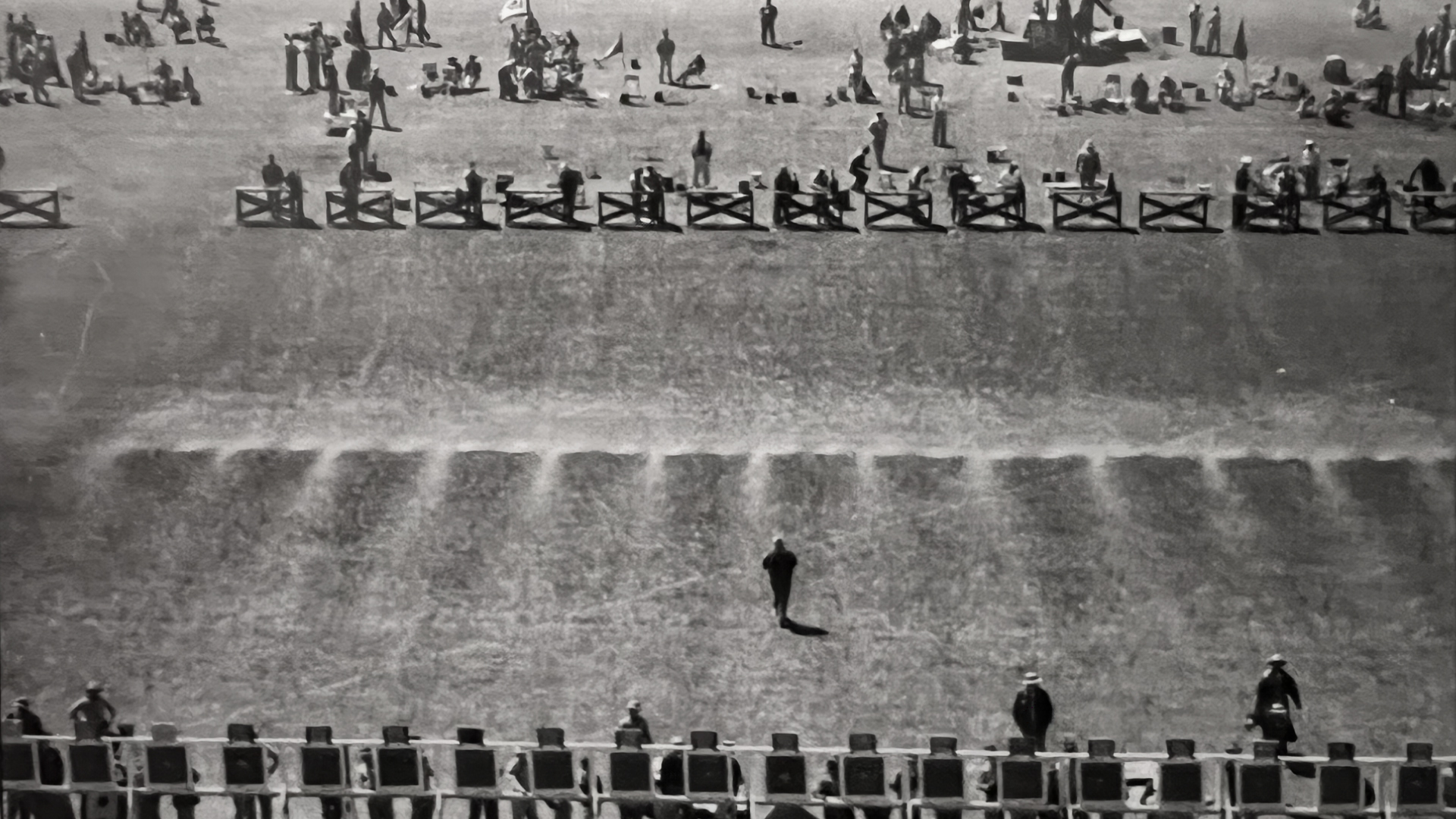
More than 3,100 shooters took part in the 1956 National Matches and more than 1,350 officers and enlisted were required to operate the various facilities and ranges. Col. Charles Leonard returned in his role as Executive Officer and the operating personnel included members of the Army’s Continental Army Command (CONARC), along with a Marine contingent of approximately 400.
There was a significant increase in participation at the Small Arms Firing Schools, which in 1956 consisted of courses for rifle and pistol divided into basic and advanced classes that were conducted by Fort Benning (now Fort Moore) staff from the Infantry School. In addition, two NRA Junior and Tyro schools, plus a Hunter Safety Clinic and two Instructor Leadership Courses were held.

The smallbore and pistol programs were fired concurrently followed by the high power events and a separate day of squadded practice was added to the schedule for each phase. National champions from the year before and 30 regional winners again received paid trips to the National Matches from the NRA, and Joe Benner acknowledged the hospitable act with a 2610-102X and a title defense. For Benner, it was his fifth NRA national pistol championship overall and the women’s title was defended as well when Gertrude Backstrom finished atop the field. The National Individual Pistol Match was won in record fashion by a future Olympic gold medalist, Marine Lt. William McMillan, Jr., whose 291-10X topped 923 others in a contest that featured the presentation of the first NRA-sponsored High Civilian award. Detroit policeman James Hurt won the inaugural honor with his 282-6X effort. The fine showing of police and military shooters continued into the team pistol sector as the Marines claimed the National Trophy title, while the U.S. Border Patrol took two of three NRA team matches. Future NRA President Harlon Carter was Chief of the Border Patrol at the time and attended the matches to receive the awards. The pistol range was enlarged this year to avoid a repeat of the crowded conditions in 1955, and the expansion included 100 points for slow fire and a separate 100-point range for timed and rapid fire. Cross squadding was employed to handle all competitors in a timely manner.
The five-day, 6400-point smallbore aggregate opened with a battle between former national champions. Ransford Triggs, whose title came in 1941, set the pace with a metallic sight 400-38X at 50 yards. In the second contest, it was 1948 champion Art Cook who blasted out a 400-33X with irons in the meter match. But by the last day it was Pennsylvanian J. Kenneth Johnson’s 6385-478X that earned him the distinction as top smallbore shooter in the land. Californian C.L. Wood also posted a 6385, but fell way short in Xs to finish second, while 1955 national champion Viola Pollum, at 10 points back, defended her women’s title.
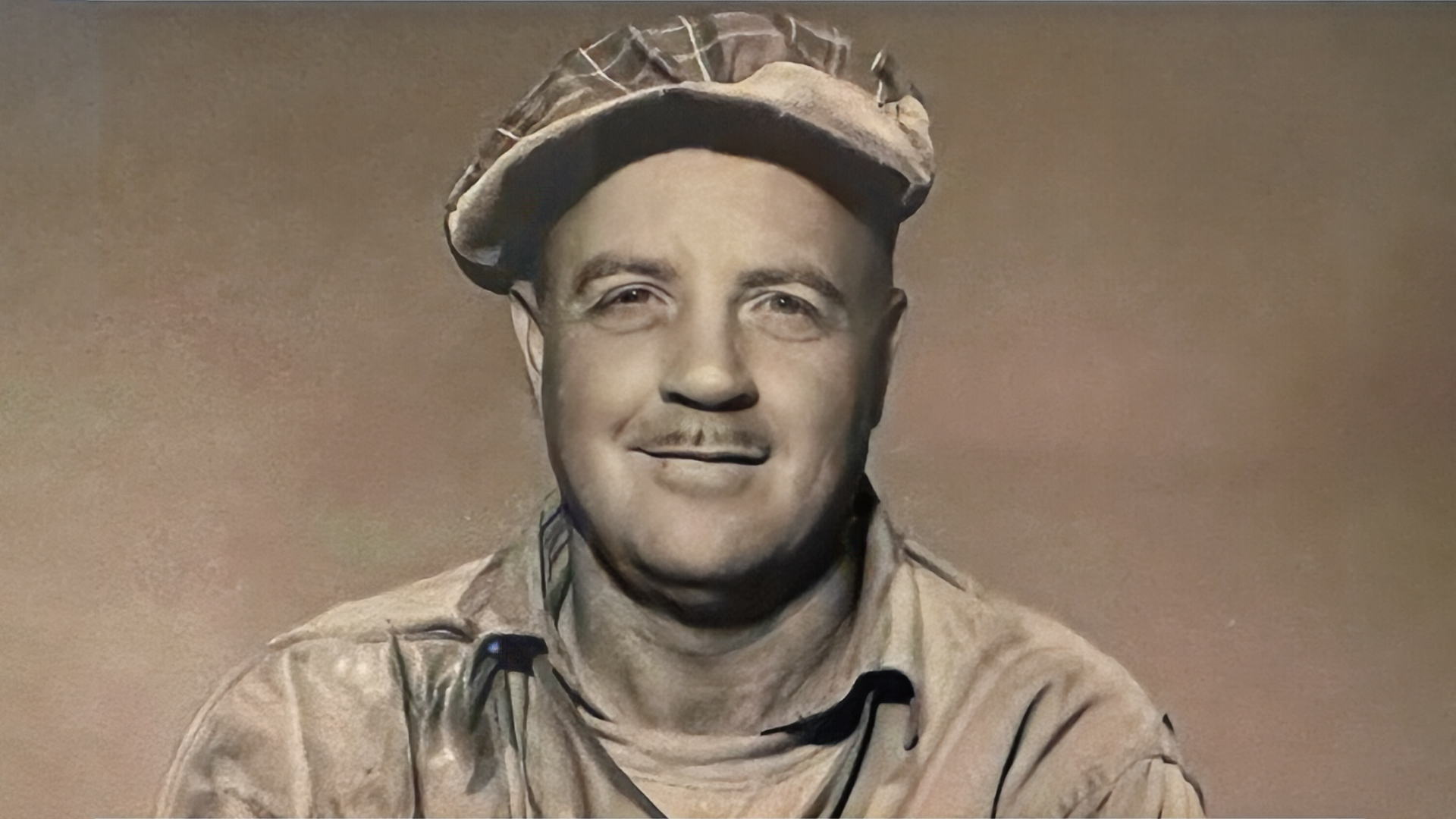
An innovation at the 1956 National Matches was the inclusion of two four-position, 50-yard events, one with metallic and one with any sights. From time to time there had been various position matches shot during the smallbore phase, notable among them the popular Harry Pope Match (standing). This year’s trial, however, most certainly contributed to the inclusion of a position championship in 1957, as both events were warmly received and hotly contested. In fact, Army Master Sgt. Francis Conway, who won the Wimbledon Cup in 1955, won the metallic-sight match just days before he switched back to big bore and accomplished the rare feat of defending his title for the prestigious long-range award. Art Cook finished second in the metallic match, but was not to be denied in the any-sight contest as he finished two points ahead of Roy Oster of Upper Darby, Pennsylvania, for the win.
The NRA National High Power Rifle Championship was changed in name this year, from “Match Rifle Championship” to “Open Championship” in order to better publicize the competition as the open event that it was. And the Army’s Loyd Crow defended his open title to become the first to repeat in the six years since the separate class structure (match and service rifle) was implemented. Marine Staff Sgt. James Hill of Quantico, Virginia, won the service title despite his limited high power experience and his first exposure to the National Match scene. Marlene Bellinger and Ruth Sawyer won the open and service women’s titles, respectively, while the high junior in service competition was Margaret Long of Washington, D.C. Additionally, the top honor in the open junior field went to Californian Middleton Tompkins, Jr., who marked the beginning of his illustrious career at the National Matches with two record-setting performances and was a scant two years away from the first of his six open championships.
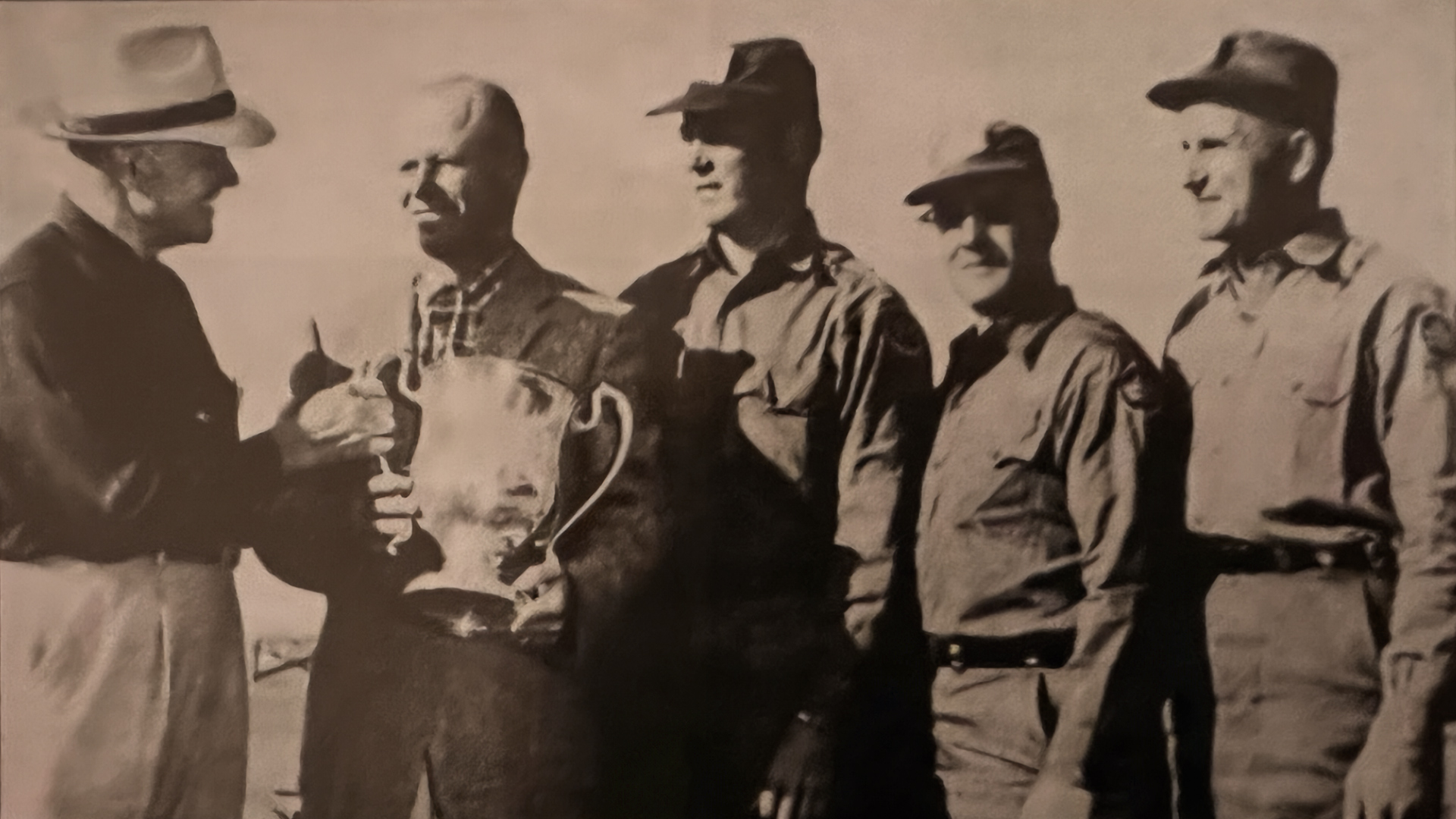
As had been the case in so many other National Match appearances, Marine shooters garnered several prestigious honors this year. In individual competition, Master Sgt. Virgil Miller won the President’s Match, CWO Charles Gebhardt won the Leech Cup, and Staff Sgt. V.D. Mitchell borrowed an M1 to finish atop the field of more than 1,250 shooters in the Board event. (The new Citizens Service Rifle Trophy—the Nathan Hale Trophy—that the NRA presented to the National Board for the Promotion of Rifle Practice for the high civilian honor in the individual event was won by Garmon Simmons of Los Angeles.) The Infantry Trophy Team and National Trophy Team Matches also went to the Marines, who not only topped their record score in the latter, but also withstood a formidable challenge when eight other teams eclipsed the mark. Other Marine team laurels came in the Herrick and Nevada Trophy events.
The Wimbledon Cup title defense by Conway was a highlight of the performances in 1956 by Army shooters, who also notched team wins in the Enlisted Men’s Trophy and Rumbold Trophy matches.
“The Matches this year were big, and very good. The Matches next year will be bigger, and better.”
—The American Rifleman, October 1956
1956 Olympic Tryouts
During the firing of the 1956 National Matches, eight shooters qualified in special events to represent the United States in the shooting competition at the Olympic Games held in Australia during November and December of that year. Below are these eight shooters and the events in which they competed.
50-Meter Free Rifle
- Arthur C. Jackson
- Verle Wright, USA
300-Meter Free Rifle
- Herbert B. Voelcker, Jr., USA
- James M. Smith, USMCR
International Slow-Fire Pistol
- CWO Offutt Pinion, USN
- Master Sgt. Huelet L. Benner, USA
International Rapid-Fire Pistol
- John Forman, U.S. Border Patrol
- Master Sgt. John H. Beaumont, Hawaii ANG
1956 National Matches Fact
To those who made the National Matches possible in 1956, all shooters owe a word of gratitude. In this group are included the Continental Army Command, for organizing the competition and conditioning the camp, the Ohio National Guard for making Camp Perry available and providing support for National Guard teams, the Erie Ordnance Depot for supply, the U.S. Army Ordnance Corps., for Ordnance services and supply, the U.S. Army’s 5th Army and 2nd Army, the 2nd Marine Division, the Infantry School at Ft. Benning, Georgia, and the U.S. Navy and the U.S. Air Force for personnel.













